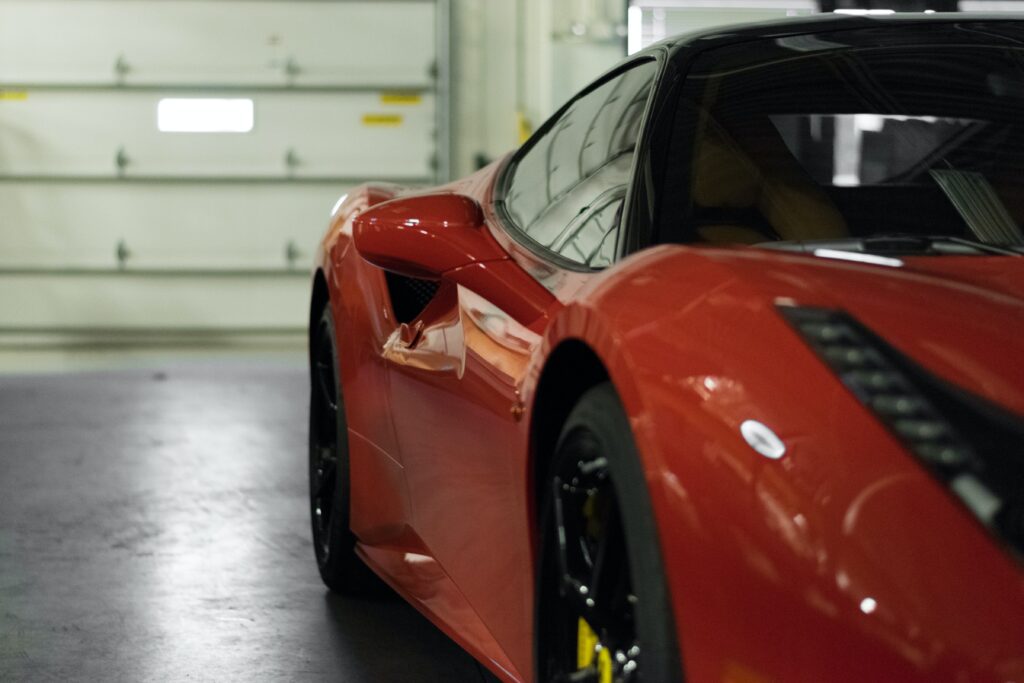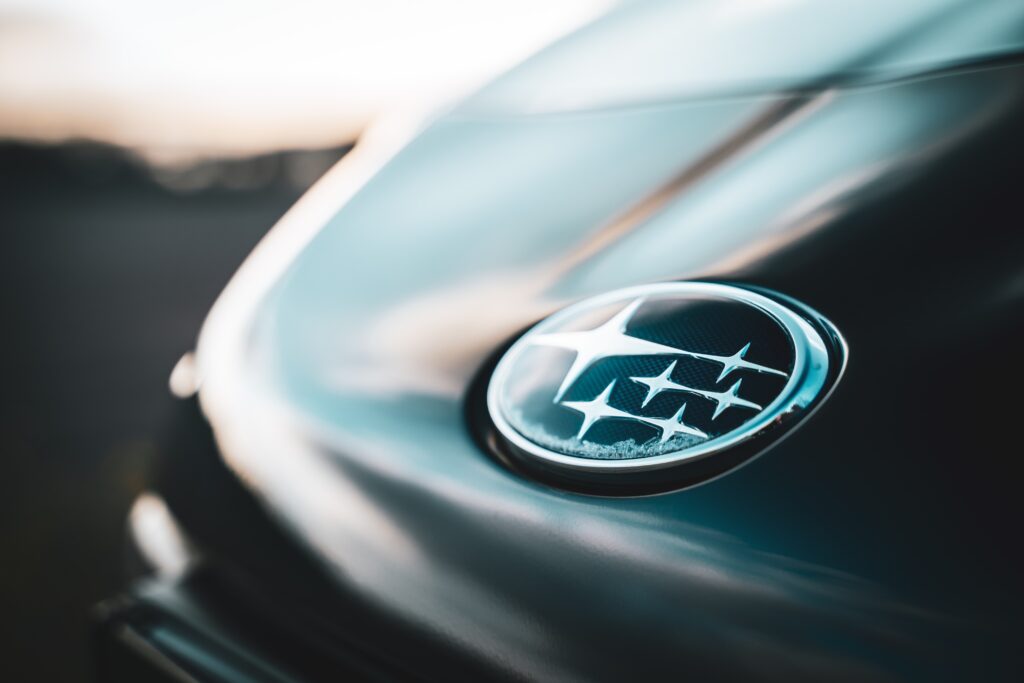Have you ever wondered about the function of an exhaust clamp? This small but essential component plays a crucial role in the efficient operation of your vehicle’s exhaust system. Acting as a secure connection point, an exhaust clamp tightly fastens the exhaust pipe and other components together, ensuring a leak-free seal. By maintaining the integrity of the exhaust system, an exhaust clamp contributes to optimal engine performance, reduced emissions, and a quieter driving experience. So, while it may go unnoticed, the humble exhaust clamp plays a vital role in the smooth functioning of your vehicle.

Understanding The Exhaust Clamp
Definition of an exhaust clamp
An exhaust clamp is a crucial component of a vehicle’s exhaust system. It is a metal device designed to secure the various sections of the exhaust system together, ensuring a tight and leak-free connection. The exhaust clamp plays a vital role in maintaining the integrity of the exhaust system and ensuring optimal performance.
Different parts of an exhaust clamp
An exhaust clamp typically consists of several parts, including the clamp body, the clamp band, and the fastening mechanism. The clamp body is the main component that holds the exhaust pipes together, while the clamp band provides the necessary pressure to create a secure connection. The fastening mechanism, which can vary depending on the type of clamp, is responsible for tightening and securing the clamp in place.
Role of an Exhaust Clamp
Sealing exhaust system connections
One of the primary functions of an exhaust clamp is to seal the connections between the various sections of the exhaust system. It ensures that no leaks or any unwanted air enters or exits the system, which is crucial for the proper functioning of the vehicle. A well-sealed exhaust system helps maintain the proper exhaust gas flow, which is essential for engine performance and efficiency.
Aiding in gas flow mechanism
The exhaust clamp plays a critical role in facilitating the smooth flow of exhaust gases from the engine to the tailpipe. By securely connecting the exhaust system components, it minimizes the risk of obstructions or restrictions in the exhaust pathway. This ensures that the engine can expel the exhaust gases efficiently, allowing for improved performance and reduced backpressure.
Enhancing exhaust sound
For automotive enthusiasts, the exhaust sound is an important factor in their overall driving experience. An exhaust clamp can help in achieving the desired exhaust note by influencing the resonance and harmonics of the exhaust system. By influencing the tightness and vibration of the exhaust components, the clamp can contribute to a more aggressive or refined sound, depending on personal preference.
Extension of vehicle lifespan
By securely connecting and sealing the exhaust system, an exhaust clamp helps prevent premature wear and damage to the components. It ensures that the exhaust system remains intact, minimizing the risk of leaks, vibrations, and other issues that can lead to costly repairs. With a properly functioning exhaust clamp, the overall lifespan of the vehicle can be extended, providing peace of mind and saving money in the long run.

Different Types of Exhaust Clamps
U-bolt clamps
U-bolt clamps are one of the most common types of exhaust clamps. As the name suggests, these clamps resemble the shape of a U and consist of a series of threaded rods and nuts. They are typically made of stainless steel and are known for their durability and ease of installation. U-bolt clamps provide a secure and reliable connection, making them suitable for various exhaust system applications.
Band clamps
Band clamps, also known as strap clamps, are designed with a wide metal band that wraps around the exhaust components to secure them together. They feature a screw or bolt mechanism that tightens the band, creating a tight seal. Band clamps are versatile and can be adjusted to fit different pipe diameters. They are often preferred for their ease of installation and adjustment.
V-band clamps
V-band clamps are widely used in high-performance and turbocharged applications. These clamps consist of a metal band with a V-shaped profile and a corresponding flange with a mating V-shape. The flange is typically welded to one of the exhaust system components, while the clamp secures it in place. V-band clamps provide a strong and reliable connection that can withstand high temperatures and extreme conditions.
Butt joint clamps
Butt joint clamps, also known as lap joint clamps, are used specifically for connecting pipes with a straight, butt-joint configuration. These clamps consist of two metal rings that wrap around the pipes and a bolt that tightens them together. Butt joint clamps are commonly used in exhaust systems with pipes of the same diameter. They provide a secure connection while allowing for some flexibility in pipe alignment.
How An Exhaust Clamp Works
Mechanism of securing exhaust system
The primary mechanism of an exhaust clamp is to secure the various components of the exhaust system together. The clamp is installed around the joint where two exhaust pipes or other components meet. The clamp band is then tightened using the fastening mechanism, applying pressure on the joint and creating a secure seal. The design of the exhaust clamp ensures that the joint remains tight and leak-free, even under the high temperatures and vibrations of the exhaust system.
Contribution to effective gas flow
In addition to securing the exhaust system, an exhaust clamp also plays a crucial role in maintaining effective gas flow. By creating a tight seal, the clamp minimizes the risk of leaks and restrictions in the exhaust pathway. This allows the exhaust gases to flow smoothly from the engine to the tailpipe, contributing to optimal engine performance and efficiency. The exhaust clamp acts as a key component in enabling the engine to expel the gases effectively, reducing backpressure and enhancing overall performance.

Installing an Exhaust Clamp
Step-by-step process
Installing an exhaust clamp can be relatively straightforward with the right tools and knowledge. Here is a step-by-step process to help guide you:
- Gather the necessary tools and materials, including an exhaust clamp, a socket wrench or pliers for tightening, and silicone or exhaust paste for sealing.
- Ensure the exhaust system is cool to the touch, as working with hot components can be dangerous.
- Identify the joint or connection where the clamp needs to be installed. This is typically where two pipes or components meet.
- Slide the exhaust clamp onto one of the pipes or components, ensuring it is positioned over the joint.
- Align the other pipe or component with the clamp, making sure it fits snugly.
- Use the socket wrench or pliers to tighten the clamp, applying enough pressure to create a secure connection. Be careful not to overtighten, as this can damage the clamp or the exhaust components.
- If necessary, apply a thin layer of silicone or exhaust paste around the joint before tightening the clamp. This will help create a better seal and prevent leaks.
- Double-check the tightness of the clamp and ensure there are no gaps or leaks around the joint.
- Start the vehicle and listen for any unusual noises or vibrations. If everything sounds and feels normal, the exhaust clamp installation is complete.
Required tools and materials
To install an exhaust clamp, you will need the following tools and materials:
- Exhaust clamp (appropriate size and type for your exhaust system)
- Socket wrench or pliers
- Silicone or exhaust paste
Safety precautions during installation
When installing an exhaust clamp, it is important to prioritize safety. Here are some safety precautions to keep in mind:
- Always ensure the exhaust system has cooled down before attempting any work. Hot components can cause burns.
- Use caution when working underneath a vehicle and make sure it is properly supported on jack stands or a lift.
- Wear gloves and eye protection to protect yourself from sharp edges and debris.
- Take care when tightening the clamp to avoid injuring yourself or damaging the clamp or exhaust components.
- After installation, start the vehicle in a well-ventilated area to prevent the buildup of exhaust fumes.
Replacing an Exhaust Clamp
Signs that an exhaust clamp needs replacement
Over time, an exhaust clamp may wear out or become damaged, requiring replacement. Here are some signs that indicate a faulty exhaust clamp:
- Unusual exhaust noises: If you notice an increase in exhaust noise or a rattling sound coming from the undercarriage of your vehicle, it may indicate a loose or broken clamp.
- Exhaust leaks: Visible signs of exhaust leaks, such as black soot or carbon deposits around the joints, can suggest a failing clamp.
- Poor gas mileage or performance: A decrease in fuel efficiency or a noticeable drop in engine performance could be attributed to an exhaust leak caused by a faulty clamp.
Materials needed for replacement
To replace an exhaust clamp, you will need the following materials:
- New exhaust clamp (matching size and type for your exhaust system)
- Socket wrench or pliers
- Silicone or exhaust paste (optional)
Procedure for replacing an exhaust clamp
Here is a general procedure to follow when replacing an exhaust clamp:
- Park your vehicle on a level surface and engage the parking brake.
- Locate the faulty clamp by inspecting the exhaust system joints for signs of damage or looseness.
- Use a socket wrench or pliers to loosen and remove the old clamp by turning it counterclockwise.
- Slide the old clamp off the joint, and carefully detach the exhaust pipes or components, if necessary.
- If the joint shows signs of corrosion or damage, clean it before proceeding with the replacement.
- Slide the new exhaust clamp onto one of the pipes or components, ensuring it is positioned correctly over the joint.
- Reattach the pipes or components, aligning them properly.
- Use the socket wrench or pliers to tighten the new clamp, applying sufficient pressure for a secure connection. Avoid overtightening.
- If desired, apply a thin layer of silicone or exhaust paste around the joint before tightening the clamp to help create a better seal and prevent leaks.
- Double-check the tightness of the clamp and ensure there are no leaks around the joint.
- Start the vehicle and listen for any abnormal sounds. If everything seems normal, the replacement is complete.
Maintaining an Exhaust Clamp
Routine checks
To ensure the longevity and optimal performance of your exhaust clamp, regular maintenance checks are essential. Here are some routine checks to perform:
- Inspect the exhaust clamp for signs of corrosion, damage, or looseness. Pay close attention to the joints and clamp band, as these are common areas of concern.
- Visualize the exhaust system connections, looking for any leaks, rust, or soot deposits that may indicate a failing clamp.
- Listen for any unusual noises while the vehicle is running, such as rattling or excessive exhaust sound, which may suggest a loose or worn-out clamp.
- Check for any vibrations or abnormal engine performance that could be attributed to exhaust leaks caused by a faulty clamp.
Cleaning and upkeep of the clamp
To keep your exhaust clamp in good condition, regular cleaning and upkeep are recommended. Here’s how to maintain your clamp:
- Clean the clamp regularly to remove any dirt, debris, or road grime that may accumulate over time. Use a brush, warm soapy water, and a cloth to gently remove any contaminants.
- Inspect the clamp for any signs of corrosion or rust. If necessary, use a wire brush or sandpaper to remove surface rust and apply rust-resistant paint or coating.
- Lubricate the clamp mechanism, such as the bolt or screw, to prevent seizing or rusting. Use a suitable lubricant, such as penetrating oil or silicone spray, and follow the manufacturer’s instructions.
- Check the tightness of the clamp periodically and adjust if necessary. Be cautious not to overtighten, as this can cause damage or distortion.
Discovering and addressing potential issues
If you notice any issues or abnormalities during routine checks or during your maintenance routine, it is important to address them promptly. Consult with a professional mechanic or exhaust system specialist if you are unsure about the severity of the problem or require assistance in resolving the issue. Ignoring potential issues can lead to further damage to the exhaust system, reduced engine performance, and safety hazards.
Consequences of a Faulty Exhaust Clamp
Impact on vehicle performance
A faulty exhaust clamp can have a significant impact on the performance of your vehicle. It can result in exhaust leaks, which can affect the engine’s ability to expel exhaust gases efficiently. This can lead to reduced power, decreased fuel efficiency, and overall poor engine performance. Additionally, a failing clamp can disrupt the proper flow of exhaust gases, causing increased backpressure and potential damage to the engine.
Exhaust leakages
One of the most common consequences of a faulty exhaust clamp is the occurrence of exhaust leaks. These leaks can arise from a loose, damaged, or worn-out clamp, allowing exhaust gases to escape from the system before reaching the tailpipe. Exhaust leaks not only contribute to increased noise levels but also pose serious health risks, as the gases contain harmful substances such as carbon monoxide. Such leaks must be addressed promptly to ensure the safety of both occupants and the environment.
Safety hazards
Driving a vehicle with a faulty exhaust clamp can pose various safety hazards. Carbon monoxide, a colorless and odorless gas, can enter the cabin of the vehicle through exhaust leaks. Breathing in this toxic gas can lead to symptoms such as headaches, dizziness, nausea, and even loss of consciousness. Furthermore, a loose or damaged clamp may cause exhaust components to become dislodged or separated, potentially resulting in damage to the vehicle, road hazards, or even accidents.
In conclusion, the exhaust clamp is an essential component of a vehicle’s exhaust system. It serves the crucial role of securing the various sections of the exhaust system together, ensuring proper sealing, gas flow, and minimizing potential issues such as leaks and vibrations. By understanding the different types of exhaust clamps, their mechanisms, installation processes, and maintenance requirements, you can ensure the proper functioning of your exhaust system and maximize the lifespan of your vehicle. Regular checks and prompt replacement of faulty clamps are key to avoiding performance issues, exhaust leakages, and safety hazards. So remember to give your exhaust clamp the attention it deserves to enjoy a smooth and safe driving experience.
